NR-439: RN Evidence-Based Practice Course Assignments & Discussions Study Guide
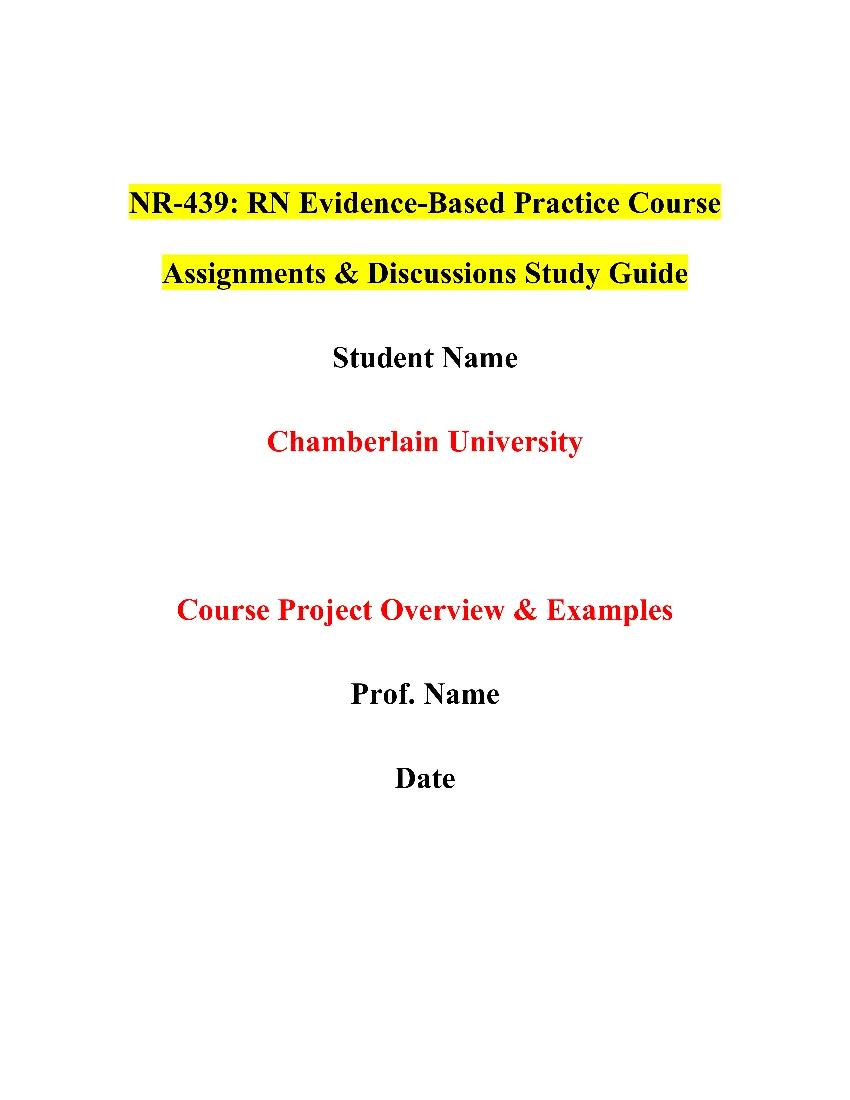 NR-439: RN Evidence-Based Practice Course Description
NR-439: RN Evidence-Based Practice Course Description
Contact Hours: Lecture – 48, Lab – 0, Clinical – 0
Semester Hours: Theory 3
The research process and its contributions to the professional nursing practice are explored. The skills related to asking research questions and searching for best evidence are reviewed. The skills related to reading published research findings with understanding and using best evidence as the basis for professional nursing practice are developed.
Prerequisites: MATH-225N, NR-305, NR-351, NR-361, NR-447, NR-435 or NR-436
Corequisite: NR-451
For top-quality coursework writing help and assignment writing services, trust Reliable Papers. Our expert team delivers 100% original human-written work tailored to your needs. Contact us via phone, WhatsApp, or live chat for assistance today and get the most reliable research paper help!
NR-439: RN Evidence-Based Practice Course Syllabus
NR-439 Week 1 Discussion Question, Role of Research and the Importance of the Searchable Clinical Question
NR-439 Week 2 Discussion Question, Search for Literature and Levels of Evidence
NR-439 Week 3 Assignment, PICOT Evidence Worksheet 1 (Use of Alarm System in Elderly Population)
NR-439 Week 3 Assignment, PICOT Evidence Worksheet 2 (Infants diagnosed with Neonatal Abstinence Syndrome)
NR-439 Week 3 Discussion Question: Research Problems, Designs, and Sample
NR-439 Week 4 Discussion Question, Ethical and Legal Issues
NR-439 Week 5 Reading Research Literature
NR-439 Week 5 Discussion Question, Data Collection and Measurement
NR439 Week 6 Assignment: Research Article Critique Paper 1 (Shortage of Nursing Workforce)
NR-439 Week 6 Assignment, Research Article Critique Paper 2 (Teamwork and Collaboration for Oncology Nursing)
NR-439 Week 6 Research Article Critique Paper 3 (Types of Photographic Art Preferred by Cancer Patients)
NR-439 Week 6 Discussion Question: Data Results and Analysis
NR-439 Week 7 Discussion Question: Applying and Sharing Evidence to Practice
NR-439 Week 8 Discussion Question: Where Do You Go From Here
You can also read another study guide on nursing assignments for students from another post on NR-361: RN Information Systems in Healthcare Course Assignments & Discussions.
Syllabus Overview
| Course Number: | NR439 |
| Course Title: | RN Evidence-Based Practice |
| Course Credits: | 3 credits |
| Prerequisite: | NR351 and MATH221 or MATH399 |
Course Description
The research process and its contributions to professional nursing practice are explored. The skills related to asking research questions and searching for best evidence are reviewed. The skills related to reading published research findings with understanding and using best evidence as the basis for professional nursing practice are developed.
Clinical Compliance Requirements
All Clinical compliance requirements must be satisfied and necessary health forms must be on file with the Corporate Clinical Office prior to registration for any clinical course. Failure to comply will result in the student being withdrawn from the class roster. Students not in compliance may be refused entry to class or clinical and will not be excused for any absences. A complete list of these requirements is at http://my.chamberlain.edu under the Clinical section or by contacting clinicalcompliance@chamberlain.edu.
Textbooks and Resources
Required Textbooks
The following books are required for this course:
Houser, J. (2018). Nursing research: Reading, using, and creating evidence (4th ed.). Sudbury, MA: Jones & Bartlett.
American Psychological Association. (2010). Publication manual of the American Psychological Association (6th ed.). Washington, DC: Author.
Physical Books and Supplies
To obtain all your books and supplies, visit the online Chamberlain bookstore at https://bookstore.chamberlain.edu/.
eBook Details
First Time Using VitalSource?
Step 1: View the VitalSource Video
Step 2: Register with VitalSource Bookshelf Online
- Click the cover or title of your eBook. A new window will open.
- Enter email address and password. Bookshelf Online will open.
Step 3: Access the Desktop and Mobile Versions
You must complete Step 2 prior to using the desktop or mobile versions.
Already Registered? 3 Ways to Access Your eBooks
Online
Access your eBook by clicking on the book cover or title in the syllabus page. Bookshelf Online will open.
Desktop
Download your eBooks and use them whether you’re connected to the Internet or not.
Mobile
Download the app and get your eBooks on your iPhone, iPad, or Android device.
Program Outcomes
The outcomes for the Bachelor of Science in Nursing (BSN) degree program are as follows:
- Provides individualized comprehensive care based on theories and principles of nursing and related disciplines to individuals, families, aggregates and communities, from entry to the healthcare system through long-term planning.
- Demonstrates leadership and collaboration with consumers and other healthcare providers in providing care and/or delegating responsibilities for health promotion, illness prevention, health restoration, health maintenance and rehabilitative activities.
- Communicates effectively with patient populations and other healthcare providers in managing the healthcare of individuals, families, aggregates and communities.
- Integrates clinical judgment in professional decision making and implementation of the nursing process.
- Demonstrates responsibility for continued personal and professional development through enrollment in graduate education, continuing education degree programs, professional reading and participation in professional organizations and community service.
- Implements professional nursing standards by practicing within the legal definitions of nursing practice and acts in accordance with the nursing code of ethics and American Nurses Association (ANA) standards of practice.
- Practices in established professional roles consistent with entry-level BSN graduates to provide cost-effective, quality healthcare to consumers in structured and unstructured settings.
- Incorporates evidence-based practice in the provision of professional nursing care to individuals, families, aggregates and communities.
Course Outcomes
Chamberlain College of Nursing courses are built to align course content with specific Course Outcomes (COs). The COs define the learning objectives that the student will be required to comprehend and demonstrate by course completion. The COs that will be covered in detail each week can be found in the Overview page in that particular week. Whenever possible, a reference will be made from a particular assignment or discussion back to the CO that it emphasizes.
Upon completion of this course, the student will be able to do the following.
- Examine the sources of evidence that contribute to professional nursing practice. (PO 7)
- Apply research principles to the interpretation of the content of published research studies. (POs 4 and 8)
- Identify ethical issues common to research involving human subjects. (PO 6)
- Evaluate published nursing research for credibility and lab significance related to evidence-based practice. (POs 4 and 8)
- Recognize the role of research findings in evidence-based practice. (POs 7 and 8)
Course Schedule
| Week, COs, and Topics | Readings | Assignments |
| Week 1
CO 5 Introduction to Evidence-Based Practice: Basic Concepts |
Houser, J. (2018). Nursing research: Reading, using, and creating evidence (4th ed.). Sudbury, MA: Jones and Bartlett.
Required Article for Discussion Kumar, S. (2015). Type 1 diabetes mellitus-common cases. Indian Journal of Endocrinology & Metabolism, 19, S76–S77. doi:10.4103/2230-8210.155409. Retrieve the article: http://proxy.chamberlain.edu:8080/login?url=http://search.ebscohost.com/login.aspx?direct=true&db=a9h&AN=102354944&site=eds-live Required Articles Riva, J. J., Malik, K. M., Burnie, S. J., Endicott, A. R., & Busse, J. W. (2012). What is your research question? An introduction to the PICOT format for clinicians. Journal of The Canadian Chiropractic Association, 56(3), 167–171. Click to retrieve the article: http://proxy.chamberlain.edu:8080/login?url=http://search.ebscohost.com/login.aspx?direct=true&db=awh&AN=88935392&site=eds-live&scope=site Stillwell, S. B., Fineout-Overholt, E., Melnyk, B. M., & Williamson, K. M. (2010). Asking the clinical question: A key step in evidence-based practice. American Journal of Nursing, 110(3), 58–61. Click the Full-Text Finder link to go to the article in OVID: http://proxy.chamberlain.edu:8080/login?url=http://search.ebscohost.com/login.aspx?direct=true&db=edswsc&AN=000279692800018&site=eds-live&scope=site |
Graded Discussion Topic |
| Week 2
COs 1 and 2 Reading Research Literature—The Research Process |
Houser, J. (2018). Nursing research: Reading, using, and creating evidence (4th ed.). Sudbury, MA: Jones and Bartlett.
Required Articles Peterson, M. H., Barnason, S., Donnelly, B., Hill, K., Miley, H., Riggs, L., & Whiteman, K. (2014). Choosing the best evidence to guide clinical practice: Application of AACN levels of evidence. Critical Care Nurse, 34(2), 58–68. doi:10.4037/ccn2014411. Retrieve the article: http://proxy.chamberlain.edu:8080/login?url=http://search.ebscohost.com/login.aspx?direct=true&db=edswsc&AN=000334575700093&site=eds-live&scope=site Hain, D. J., & Kear, T. M. (2015). Using evidence-based practice to move beyond doing things the way we have always done them. Nephrology Nursing Journal, 42(1), 11–21. Retrieve the article: http://proxy.chamberlain.edu:8080/login?url=http://search.ebscohost.com/login.aspx?direct=true&db=edswsc&AN=000350008200003&site=eds-live&scope=site |
Graded Discussion Topic |
| Week 3
COs 2 and 4 Reading Research Literature— Problems and Designs |
Houser, J. (2018). Nursing research: Reading, using, and creating evidence (4th ed.). Sudbury, MA: Jones and Bartlett.
Required Articles: Fu, M., Hu, J., & Cai, X. (2015). Effectiveness of a community-based diabetes self-management intervention for Chinese adults with type 2 diabetes: A pilot study. International Journal of Nursing Practice, 21, 132-140. doi:10.1111/ijn.12373. Retrieve the article: http://proxy.chamberlain.edu:8080/login?url=http://search.ebscohost.com/login.aspx?direct=true&db=edswsc&AN=000356970800017&site=eds-live&scope=site Pals, R. S., Hansen, U. M., Johansen, C. B., Hansen, C. S., Jørgensen, M. E., Fleischer, J., & Willaing, I. (2015). Making sense of a new technology in clinical practice: A qualitative study of patient and physician perspectives. BMC Health Services Research, 15(1), 1-10. doi:10.1186/s12913-015-1071-1. Retrieve the article: http://proxy.chamberlain.edu:8080/login?url=http://search.ebscohost.com/login.aspx?direct=true&db=her&AN=109884152&site=eds-live |
PICOT/Evidence Appraisal Worksheet
Graded Discussion Topic |
| Week 4
COs 1, 2, 3, 4, and 5 Reading Research Literature—Sampling and Ethics |
Houser, J. (2018). Nursing research: Reading, using, and creating evidence (4th ed.). Sudbury, MA: Jones and Bartlett.
Required Articles Stefaniak, M., & Mazurkiewicz, B. (2017). The importance of adhering to high standards of research ethics. British Journal of Nursing, 26(1), 62. Retrieve the article: http://proxy.chamberlain.edu:8080/login?url=http://search.ebscohost.com/login.aspx?direct=true&db=ccm&AN=120706824&site=eds-live&scope=site Feeney, S., & Freeman, N. K. (2016). Ethical issues: Responsibilities and dilemmas. YC: Young Children, 71(1), 86. Retrieve the article: http://proxy.chamberlain.edu:8080/login?url=http://search.ebscohost.com/login.aspx?direct=true&db=edb&AN=114680496&site=eds-live Optional Readings Jaworska, A., & Tannenbaum, J. (2015). Who Has the capacity to participate as a rearee in a person-rearing relationship? Ethics, 125(4), 1096-1113. Retrieve the article: http://proxy.chamberlain.edu:8080/login?url=http://search.ebscohost.com/login.aspx?direct=true&db=a2h&AN=108366230&site=eds-live&scope=site Fu, M., Hu, J., & Cai, X. (2015). Effectiveness of a community-based diabetes self-management intervention for Chinese adults with type 2 diabetes: A pilot study. International Journal of Nursing Practice, 21, 132–140. doi:10.1111/ijn.12373. Retrieve the article: http://proxy.chamberlain.edu:8080/login?url=http://search.ebscohost.com/login.aspx?direct=true&db=edswsc&AN=000356970800017&site=eds-live&scope=site Pals, R. S., Hansen, U. M., Johansen, C. B., Hansen, C. S., Jørgensen, M. E., Fleischer, J., & Willaing, I. (2015). Making sense of a new technology in clinical practice: a qualitative study of patient and physician perspectives. BMC Health Services Research, 15(1), 1–10. doi:10.1186/s12913-015-1071-1. Retrieve the article: http://proxy.chamberlain.edu:8080/login?url=http://search.ebscohost.com/login.aspx?direct=true&db=her&AN=109884152&site=eds-live |
Graded Discussion Topic |
| Week 5
COs 2, 4, and 5 Reading Research Literature—Implementing the Study, Data Collection Methods |
Houser, J. (2018). Nursing research: Reading, using, and creating evidence (4th ed.). Sudbury, MA: Jones and Bartlett.
Required Website American Nurses Association. (2014). Fast facts: The nursing workforce 2014: Growth, salaries, education, demographics & trends. ANA. Retrieved from http://nursingworld.org/MainMenuCategories/ThePracticeofProfessionalNursing/workforce/Fast-Facts-2014-Nursing-Workforce.pdf Required Article Wolf, L. A., Carman, M. J., Henderson, D., Kamienski, M., Koziol-McLain, J., Manton, A., & & Moon, M. D. (2013). Evaluating evidence for practice. Journal of Emergency Nursing. 39(2). 197–199. doi:10.1016/j.jen.2012.11.009. Click the Full-Text Finder link to go to the article in OVID: http://proxy.chamberlain.edu:8080/login?url=http://search.ebscohost.com/login.aspx?direct=true&db=edswsc&AN=000317417000020&site=eds-live&scope=site |
Reading Research Literature
Graded Discussion Topic |
| Week 6
COs 1 and 2 Reading Research Literature—Results |
Houser, J. (2018). Nursing research: Reading, using, and creating evidence (4th ed.). Sudbury, MA: Jones and Bartlett.
|
Research Article Paper
Graded Discussion Topic |
| Week 7
COs 2 and 5 Reading Research Literature—Credibility and Significance |
Houser, J. (2018). Nursing research: Reading, using, and creating evidence (4th ed.). Sudbury, MA: Jones and Bartlett.
|
Graded Discussion Topic |
| Week 8
CO 5 Implementing EBP—Where Do You Go From Here? |
None | Graded Discussion Topic |
Late Assignment Policy
Students are expected to submit assignments by the time they are due. Assignments submitted after the due date and time will receive a deduction of 10% of the total points possible for that assignment for each day the assignment is late. Assignments will be accepted, with penalty as described, up to a maximum of three days late, after which point a zero will be recorded for the assignment.
In the event of an emergency that prevents timely submission of an assignment, students may petition their instructor for a waiver of the late submission grade reduction. The instructor will review the student’s rationale for the request and make a determination based on the merits of the student’s appeal. Consideration of the student’s total course performance to date will be a contributing factor in the determination. Students should continue to attend class, actively participate, and complete other assignments while the appeal is pending.
This Policy applies to assignments that contribute to the numerical calculation of the course letter grade.
Due Dates for Assignments and Exams
Unless otherwise specified, the following applies.
- Access to the course begins on Sunday at 12:01 a.m. (MT) during preview week.
- All assignments are to be submitted on or before Sunday at the end of the specified week that they are due by 11:59 p.m. (MT).
- All quizzes and exams, if applicable in your course, are to be completed on or before Saturday at the end of the specified week that they open by 11:59 p.m.(MT).
Note: In Week 8, for the DNP, MSN, RN-BSN, and Prelicensure BSN, the assignments would be due by Wednesday at 11:59 p.m. MT.
Faculty Grading/Response Schedule
Grades for Discussion will be posted by Tuesday night after the due date, except for grades for Week 8 Discussion, which will be posted by Friday at the end of Week 8. For all other work (papers, projects, etc.), grades will be posted by Friday night after the due date. An announcement will be posted if these deadlines cannot be met.
Faculty will respond to student emails or questions in the Q & A Forum within 48 hours.
Concerns about faculty grading and responsiveness may be sent to the director and the dean of the RN-to-BSN Option by clicking on the Online Administrator’s Message link under Course Home.
Evaluation Methods
The maximum score in this class is 1,000 points. The categories, which contribute to your final grade, are weighted as follows.
| Assignment | Points | Weighting |
| Discussions (50 points per topic, one topic per week for Weeks 1–8) | 400 | 40% |
| PICOT/Evidence Appraisal Worksheet Assignment (Week 3) | 200 | 20% |
| Reading Research Literature Assignment (Week 5) | 225 | 22.5% |
| Research Article Assignment (Week 6) | 175 | 17.5% |
| Total Points | 1,000 | 100% |
No extra credit assignments are permitted for any reason.
The course grade is determined by transferring the total number of points possible in the course to a percentage grade. There is no rounding of grades. Percentages of 0.5% or higher are not raised to the next whole number. A final grade of 76% (letter grade C) is required to pass the course.
| Letter Grade | Points | Percentage |
| A | 940–1,000 | 94% to 100% |
| A- | 920–939 | 92% to 93% |
| B+ | 890–919 | 89% to 91% |
| B | 860–889 | 86% to 88% |
| B- | 840–859 | 84% to 85% |
| C+ | 810–839 | 81% to 83% |
| C | 760–809 | 76% to 80% |
| F | 759 and below | 75% and below |
Chamberlain College of Nursing students are expected to conduct themselves in an ethical and professional manner. All academic assignments, including papers, exams, projects, and in-class assignments must be the original work of the individual student unless otherwise specified by the instructor. Academic or clinical dishonesty are exceptionally serious offenses and may result in a failing grade on an assignment, failure in the course, or dismissal from the College.
Students agree that by taking this course all required papers, threaded discussions or other written learning activities may be subject to submission for textual similarity review to Turnitin.com for the detection of plagiarism. All submitted papers will be included as source documents in the Turnitin.com reference database solely for the purpose of detecting plagiarism of such papers. Use of the Turnitin.com service is subject to the Terms and Conditions of Use posted on the Turnitin.com site.
Participation: RN-to-BSN
In discussions, you, as a student, will interact with your instructor and classmates to explore topics related to the content of this course. You will be graded for the following.
-
Attendance
Discussions (graded): Discussions are a critical learning experience in the online classroom. Participation in all discussions is required.
-
Guidelines and Rubric for Discussions
PURPOSE: Threaded discussions are designed to promote dialogue between faculty and students, and students and their peers. In the discussions students:
- Demonstrate understanding of concepts for the week
- Integrate scholarly resources
- Engage in meaningful dialogue with classmates
- Express opinions clearly and logically, in a professional manner
Participation Requirement: You are required to post a minimum of three (3) times in each graded discussion. These three (3) posts must be on a minimum of two (2) separate days. You must respond to the initial discussion question by 11:59 p.m. MT on Wednesday.
Participation points: It is expected that you will meet the minimum participation requirement described above. If not:
- You will receive a 10% point deduction in a thread if your response to the initial question is not posted by 11:59 p.m. MT on Wednesday
- You will also receive a 10% point deduction in a thread if you do not post at least three (3) times in each thread on at least two (2) separate days.
-
Threaded Discussion Guiding Principles
The ideas and beliefs underpinning the threaded discussions (TDs) guide students through engaging dialogues as they achieve the desired learning outcomes/competencies associated with their course in a manner that empowers them to organize, integrate, apply and critically appraise their knowledge to their selected field of practice. The use of TDs provides students with opportunities to contribute level-appropriate knowledge and experience to the topic in a safe, caring, and fluid environment that models professional and social interaction. The TD’s ebb and flow is based upon the composition of student and faculty interaction in the quest for relevant scholarship. Participation in the TDs generates opportunities for students to actively engage in the written ideas of others by carefully reading, researching, reflecting, and responding to the contributions of their peers and course faculty. TDs foster the development of members into a community of learners as they share ideas and inquiries, consider perspectives that may be different from their own, and integrate knowledge from other disciplines.
-
Participation Guidelines
You are required to post a minimum of three (3) times in each graded discussion. These three (3) posts must be on a minimum of two (2) separate days. You must respond to the initial discussion question by 11:59 p.m. MT on Wednesday. Discussions for each week close on Sunday at 11:59 p.m. Mountain Time (MT). To receive credit for a week’s discussion, students may begin posting no earlier than the Sunday immediately before each week opens. For courses with Week 8 graded discussions, the threads will close on Wednesday at 11:59 p.m. MT. All discussion requirements must be met by that deadline.
-
Grading Rubric
| Discussion Criteria | A (100%) Outstanding or highest level of performance |
B (87%) Very good or high level of performance |
C (76%) Competent or satisfactory level of performance |
F (0) Poor or failing or unsatisfactory level of performance |
| Answers the initial graded threaded discussion question(s)/topic(s), demonstrating knowledge and understanding of concepts for the week. 16 points |
Addresses all aspects of the initial discussion question(s) applying experiences, knowledge, and understanding regarding all weekly concepts.
16 points |
Addresses most aspects of the initial discussion question(s) applying experiences, knowledge, and understanding of most of the weekly concepts.
14 points |
Addresses some aspects of the initial discussion question(s) applying experiences, knowledge, and understanding of some of the weekly concepts.
12 points |
Minimally addresses the initial discussion question(s) or does not address the initial question(s).
0 points |
| Integrates evidence to support discussion. Sources are credited.* ( APA format not required) 12 points |
Integrates evidence to support your discussion from:
Sources are credited.* 12 points |
Integrates evidence to support discussion from:
Sources are credited.* 10 points |
Integrates evidence to support discussion only from an outside source with no mention of assigned reading or lesson.
Sources are credited.* 9 points |
Does not integrate any evidence.
0 points |
| Engages in meaningful dialogue with classmates or instructor before the end of the week. 14 points |
Responds to a classmate and/or instructor’s post furthering the dialogue by providing more information and clarification, thereby adding much depth to the discussion.
14 points |
Responds to a classmate and/or instructor furthering the dialogue by adding some depth to the discussion.
12 points |
Responds to a classmate and/or instructor but does not further the discussion.
10 points |
No response post to another student or instructor.
0 points |
| Communicates in a professional manner. 8 points |
Presents information using clear and concise language in an organized manner (minimal errors in English grammar, spelling, syntax, and punctuation).
8 points |
Presents information in an organized manner (few errors in English grammar, spelling, syntax, and punctuation).
7 points |
Presents information using understandable language but is somewhat disorganized (some errors in English grammar, spelling, syntax, and punctuation).
6 points |
Presents information that is not clear, logical, professional or organized to the point that the reader has difficulty understanding the message (numerous errors in English grammar, spelling, syntax, and/or punctuation).
0 points |
| PARTICIPATION: Response to initial question: Responds to initial discussion question(s) by Wednesday, 11:59 p.m. M.T. |
0 points lost
Student posts an answer to the initial discussion question(s) by Wednesday, 11:59 p . m. MT. |
-5 points
Student does not post an answer to the initial discussion question(s) by Wednesday, 11:59 p . m. MT. |
||
| PARTICIPATION Total posts: Participates in the discussion thread at least three times on at least two different days. |
0 points lost
Posts in the discussion at least three times AND on two different days. |
-5 points
Posts fewer than three times OR does not participate on at least two different days. |
||
| NOTES: * Credited means stating where the information came from (specific article, text, or lesson). Examples: Our text discusses…. The information from our lesson states…, Smith (2010) claimed that…, Mary Manners (personal communication, November 17, 2011)…. APA formatting is not required. |
||||
| ** Assigned readings are those listed on the syllabus or assignments page as required reading. This may include text readings, required articles, or required websites. | ||||
| *** Scholarly source – per the APA Guidelines in Course Resources, only scholarly sources should be used in assignments. These include peer reviewed publications, government reports, or sources written by a professional or scholar in the field. Wikipedia, Wikis, .com website or blogs should not be used as anyone can add to these. For the discussions, reputable internet sources such as websites by government agencies (URL ends in .gov) and respected organizations (often ends in .org) can be counted as scholarly sources. Outside sources do not include assigned required readings. | ||||
| NOTE: A zero is the lowest score that a student can be assigned. | ||||
-
Chamberlain Policies
Students are required to comply with Chamberlain College of Nursing’s academic policies. To access Chamberlain’s policy on academic integrity (and all other Chamberlain policies), please review the information in your Undergraduate Student Handbook, Undergraduate Catalog, and the policies outlined in this course.
The Undergraduate Catalog describes the technical requirements for students. Sufficient technology and Internet access is required to complete Chamberlain College of Nursing online classes. Technical requirements include, but are not limited to:
- Hardware/Software Requirements
- Supported Operating Systems
- Productivity Tools (Microsoft Office, VitalSource Bookshelf)
- Internet Access o Internet Connections
- Supported Browsers
- Browser Settings
- Plug-ins
- Screen Settings
- Hardware Specifications
- Computer Internet Security
- Operating System Updates
Chamberlain College of Nursing is committed to providing reasonable accommodations for eligible students with documented disabilities as defined by state and federal laws relating to the Americans with Disabilities Act (ADA). Our intent is to ensure that every student who makes a request for accommodations under ADA is advised of the accommodation process as promptly as possible. If you are a student with a verifiable documented disability, and you can provide medical documentation regarding this disability, then contact our ADA Officer at adaofficer@chamberlain.edu for more information on how to receive ADA accommodations in your online classes or fax your request to 630-596-1651.
Webliography
The purpose of the Webliography is to provide students with annotated bibliographies of world wide websites relevant to their courses. These websites are not meant to be all inclusive of what is available for each course’s subjects and have not been sanctioned as academically rigorous or scholarly by Chamberlain College of Nursing. Please exercise caution when using these websites for course assignments and references.
Make Your Nursing Academic Journey Truly Fulfilling with Our Expert Nursing Assignment Writing Help!
Feeling overwhelmed by the demands of your nursing essays and assignments? Don’t let stress derail your academic success. ReliablePapers.com is your partner in navigating the challenges of nursing studies. Our reliable nursing paper writing services are tailored to lighten your assignment load and ensure your journey in nursing education is not just manageable, but truly fulfilling.
Expertise That Sets Us Apart
At ReliablePapers.com, we understand the unique struggles faced by nursing students. That’s why we’ve assembled a team of seasoned nursing writers who are not only experts in their field but also passionate about helping students succeed. Our writers bring years of academic writing experience and a deep understanding of nursing topics, ensuring that your papers are meticulously crafted to meet the highest standards.
Why Choose ReliablePapers.com for Your Nursing Essays?
- Experienced Nursing Writers: Our team comprises experienced nursing professionals who are dedicated to delivering top-quality nursing papers tailored to your requirements.
- Direct Communication: You’ll have direct communication with your assigned writer, allowing for seamless collaboration and transparency throughout the writing process.
- Affordable Prices: We understand the financial constraints of students, which is why we offer competitive prices starting at just $10 per page.
- Guaranteed Originality: Plagiarism is a strict no-no at ReliablePapers.com. We guarantee 100% original, custom-made papers that reflect your unique voice and understanding.
- Timely Support: With our fast turnaround times and dedicated support team, you can rest assured that your papers will be delivered on time, every time.
- Hassle-Free Ordering: Ordering a custom nursing paper from ReliablePapers.com is quick and easy. Simply provide your details, and our experts will take care of the rest.
Why Struggle When Help Is Just a Click Away?
Don’t let nursing assignments overwhelm you. With ReliablePapers.com’s nursing writing help services, you can reclaim your time, achieve top grades, and stay ahead of the curve. Order your custom nursing paper today and unlock your full potential with ReliablePapers.com!
Don’t Let Stress Define Your Nursing Academic Journey
Place your order with ReliablePapers.com today and experience the difference firsthand. Whether you need to buy nursing research papers, get cheap nursing papers, or get professional nursing coursework help, we’ve got you covered. Trust us with your nursing assignments, and let us help you succeed in your nursing studies.
Hire an Expert Paper Writer on Any Subject, Any Topic, Any Deadline! Submit your paper instructions by placing your order here to get started!


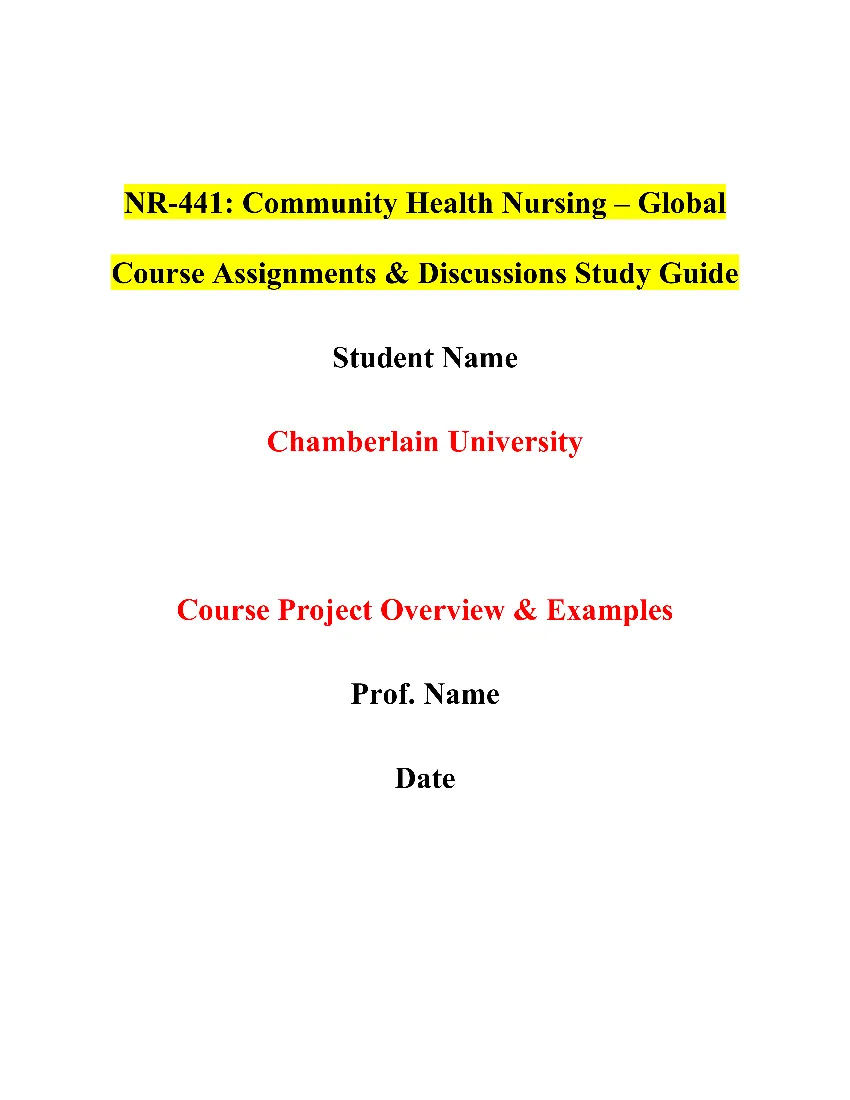 NR-441: Community Health Nursing – Global Course Description
NR-441: Community Health Nursing – Global Course Description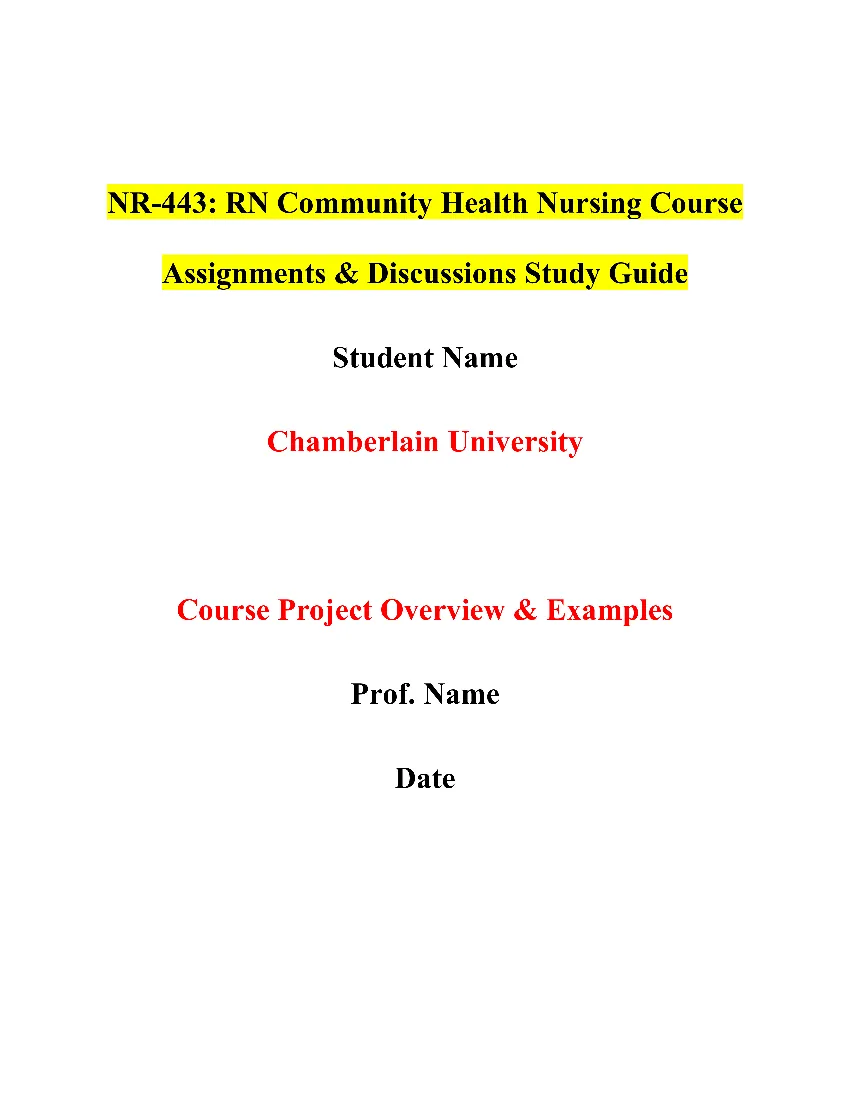 NR-443: RN Community Health Nursing Course Description
NR-443: RN Community Health Nursing Course Description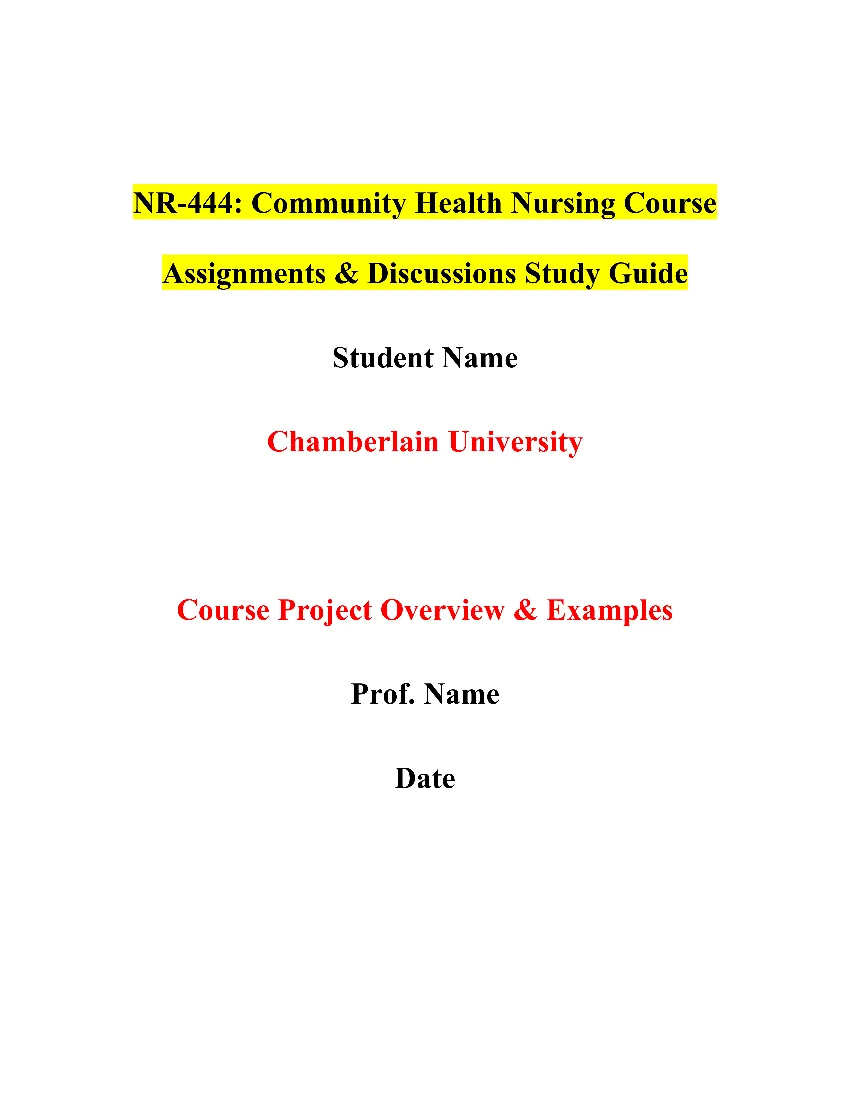 NR-444: Community Health Nursing Course Description
NR-444: Community Health Nursing Course Description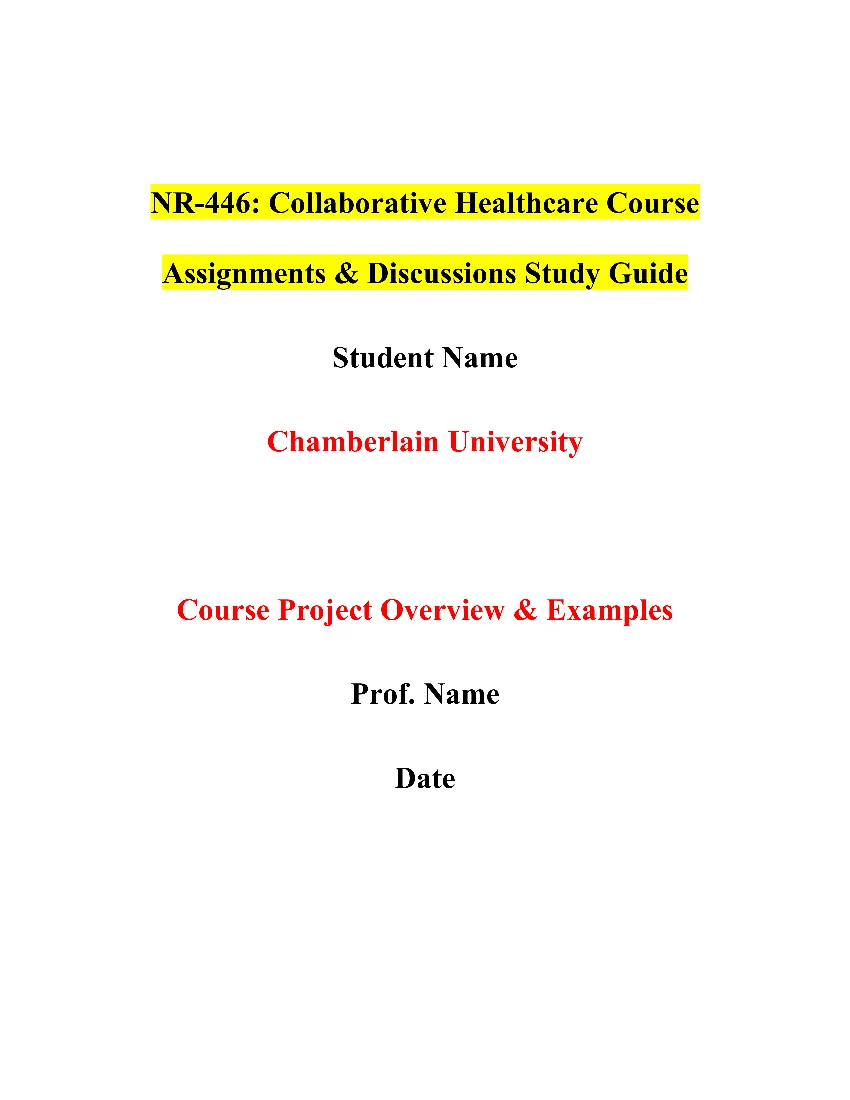 NR-446: Collaborative Healthcare Course Description
NR-446: Collaborative Healthcare Course Description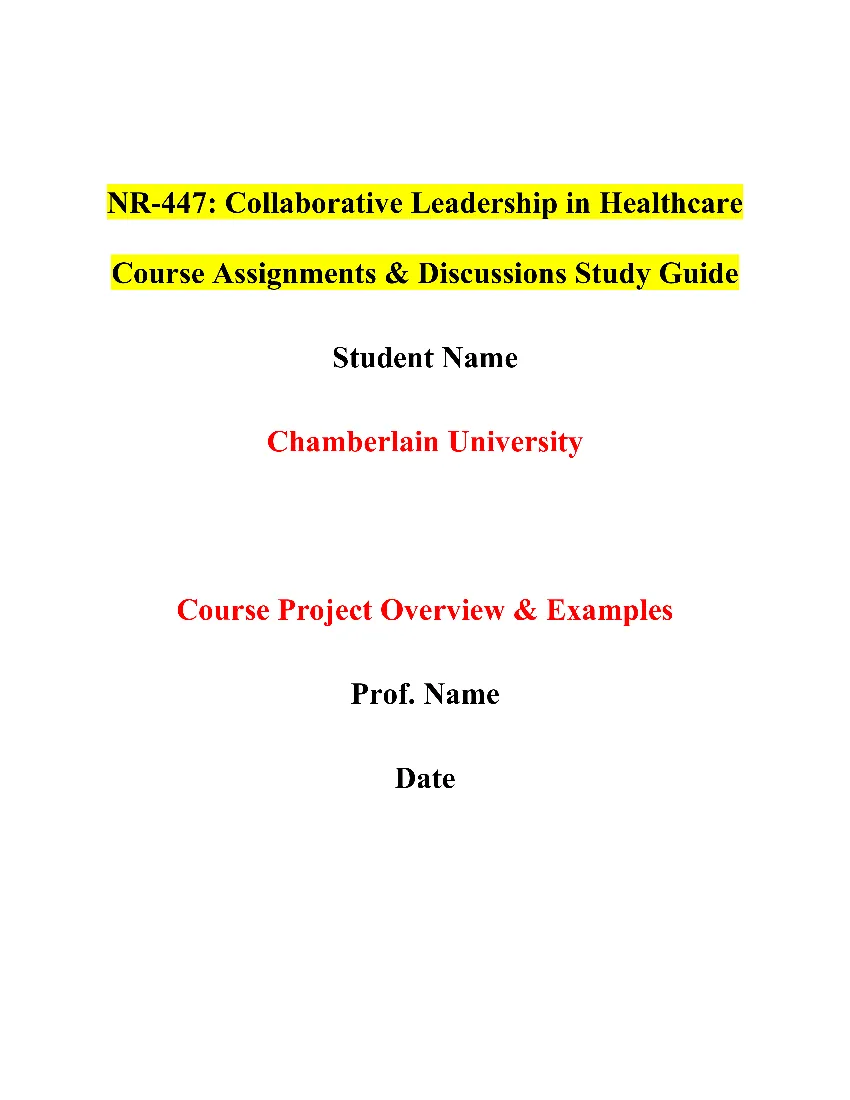 NR-447: Collaborative Leadership in Healthcare Course Description
NR-447: Collaborative Leadership in Healthcare Course Description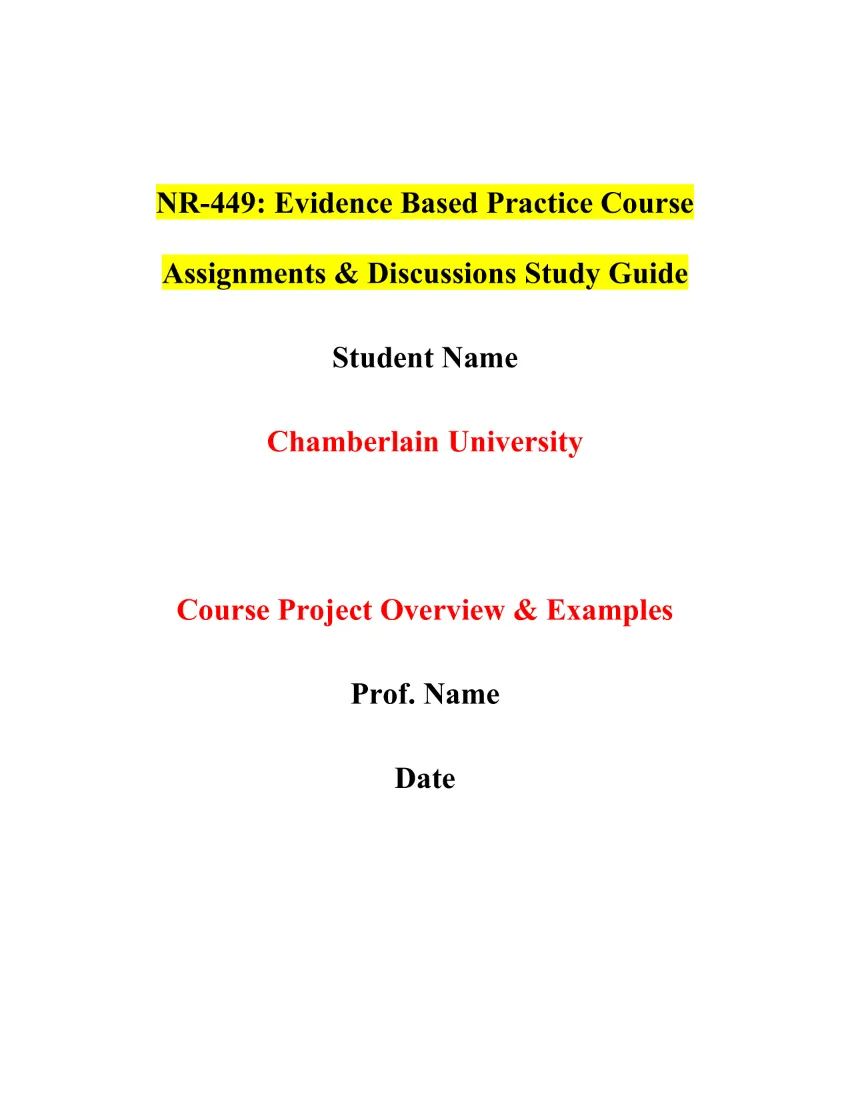 NR-449: Evidence Based Practice Course Description
NR-449: Evidence Based Practice Course Description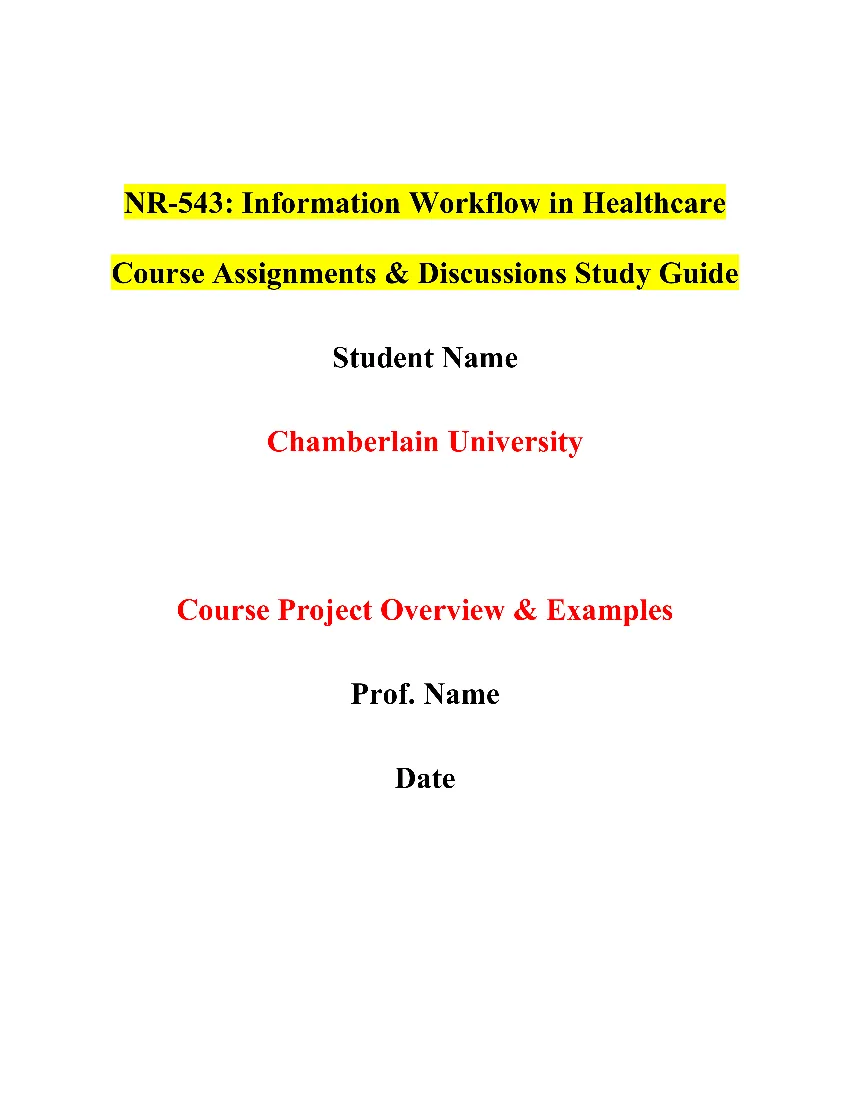 NR-543: Information Workflow in Healthcare Course Description
NR-543: Information Workflow in Healthcare Course Description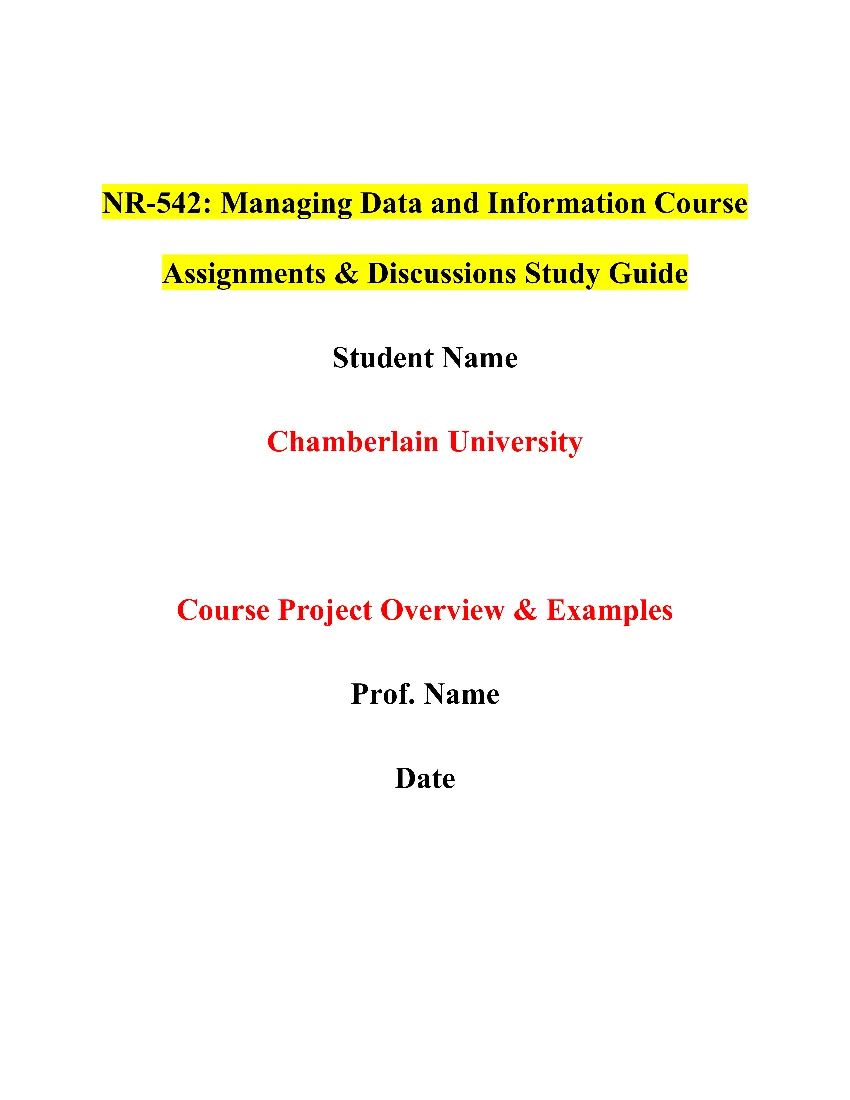 NR-542: Managing Data and Information Course Description
NR-542: Managing Data and Information Course Description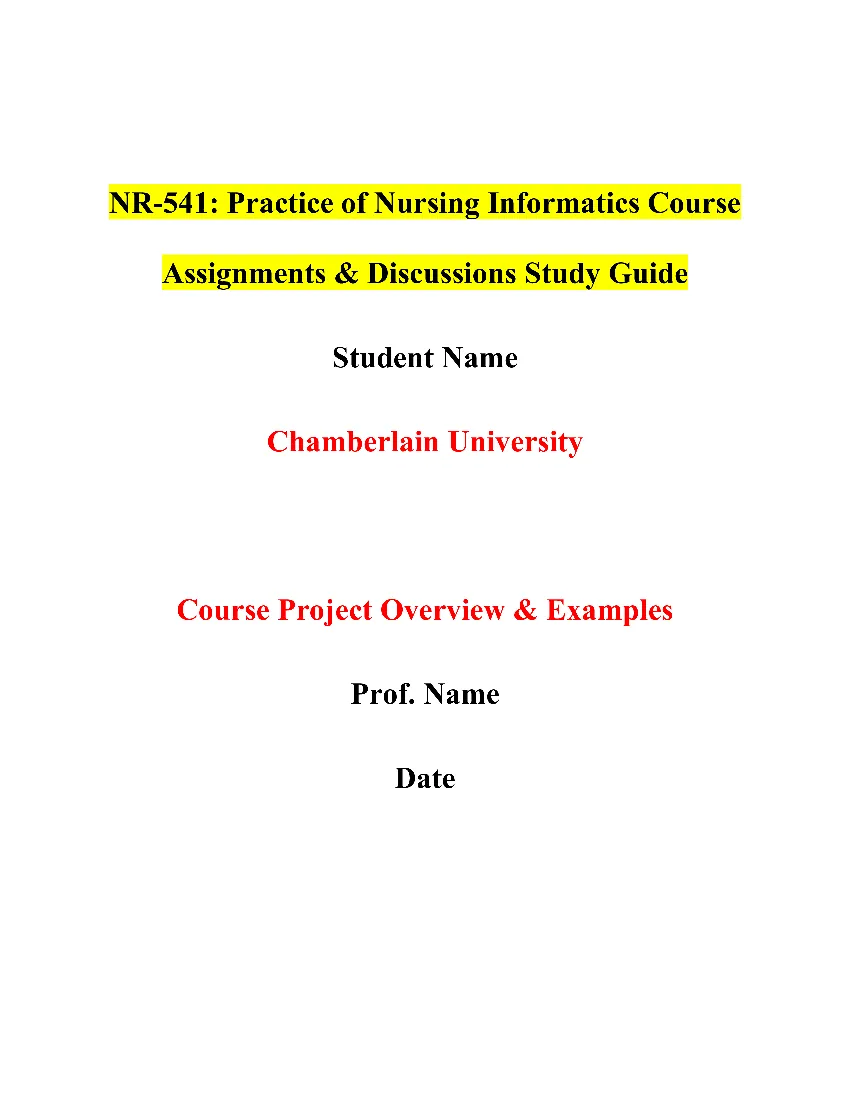 NR-541: Practice of Nursing Informatics Course Description
NR-541: Practice of Nursing Informatics Course Description